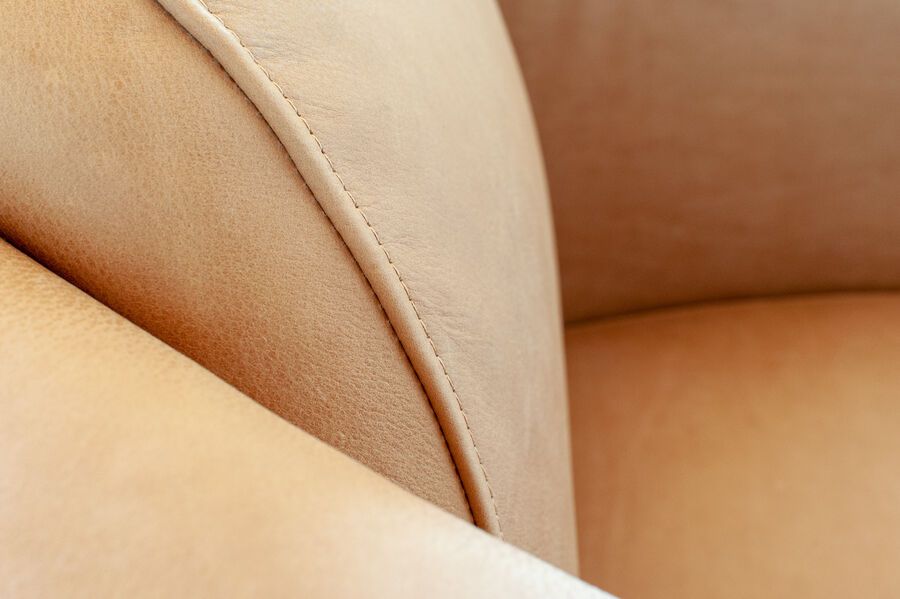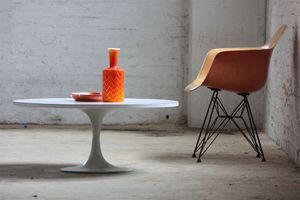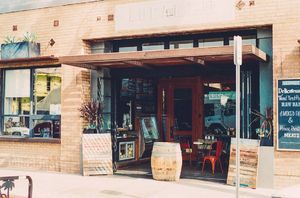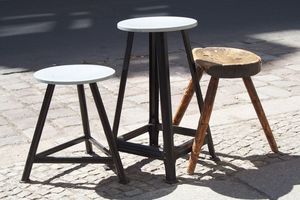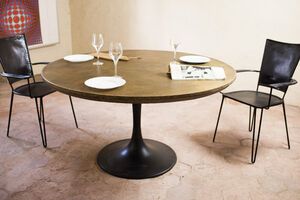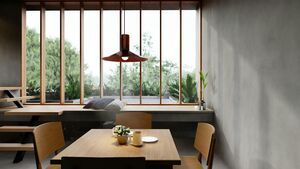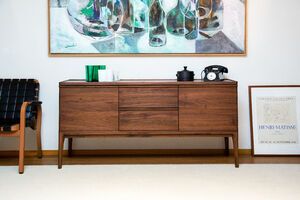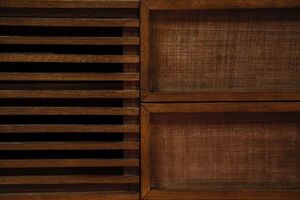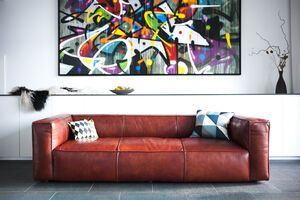A living material with many faces
Among the oldest materials used in furniture, leather holds a unique place. Both resistant and sensual, raw and refined, it tells a story, that of a material that does not cheat. But behind the word ?leather? lies a great diversity of treatments, qualities, and finishes.
Understanding the different types of leather means better appreciating what they offer?and what they require. It also means making an informed choice, depending on the use, the style, and the patina you wish to see develop over time.
At pib, we favor full-grain leathers, often aniline, for their authenticity and their ability to age gracefully. Here are the main categories of leather to know.
Full-grain leather: the very essence of leather
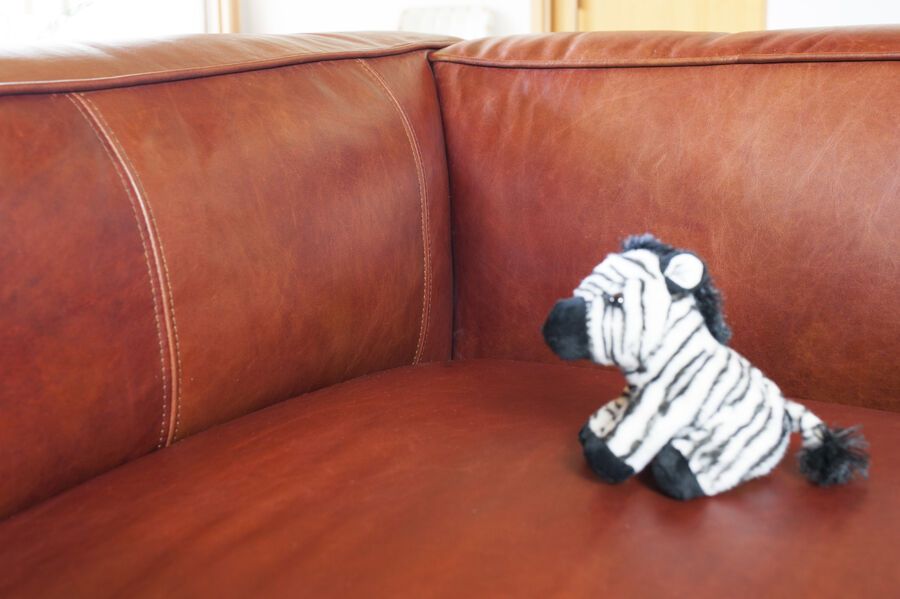
Mahogany full-grain aniline leather from the Krieger collection
Full-grain leather is considered the most noble. It is the upper layer of the hide, the one that shows the natural grain, without sanding or correction. It retains its irregularities, subtle folds, sometimes small scars: all marks that make its authenticity.
Because it is intact, full-grain leather is also the densest, the most resistant to wear, and paradoxically, the softest to the touch. It breathes, absorbs, and evolves with its environment. It is a living, demanding leather, but of rare beauty.
It is found on our most emblematic sofas and armchairs, where the material takes center stage, without artifice.
Aniline and semi-aniline leather: pure nobility
Aniline leather is dyed through with soluble dyes, without covering pigments or opaque finishing layers. This process fully respects the natural appearance of the hide: irregular grain, marks, visible pores. Only hides of the highest quality can be used for aniline, as no defect can be concealed.
This type of leather offers an exceptional depth of color, changing reflections depending on the light, and a supple, warm, almost textile-like feel. But it is also the most sensitive: permeable to liquids, vulnerable to grease stains, UV, and repeated friction. It patinates over time, develops nuances, and darkens in places. It is a living leather, one that accepts traces and aging as an aesthetic value.
Semi-aniline leather follows the same dyeing principle, but receives on the surface a thin transparent protective layer. This finish?generally resin-based?preserves the natural appearance of the leather while making it more resistant to use. It retains a beautiful suppleness, while being less exposed to the risks of daily life.
These leathers are often chosen for their ability to age gracefully, to evolve, to bear the marks of an assumed use. They do not seek frozen perfection, but a beauty in motion, like an object that one keeps, observes, and touches over time.
Pigmented leather: more uniform, more protected
Pigmented leather undergoes surface correction (light sanding, reconstituted grain) and then receives an opaque pigmented layer. This gives a uniform finish, without visible marks, and highly resistant to stains or fading.
Easier to maintain on a daily basis, it is often used in family or public environments. But it loses the finesse of the natural grain, the feel is less warm, and the patina remains limited.
Split leather: accessible but less alive
Split leather is the lower part of the hide, mechanically separated from the grain. It is often covered with a finish to give it the appearance of full-grain leather, but the feel, suppleness, and longevity are not comparable.
It offers a more affordable alternative, suitable for occasional or decorative use. But it will never develop the same patina or the same sensory bond as full-grain leather.
Alternative leathers: reconstituted, synthetic, vegan
Among the alternatives, we find:
Reconstituted leather: a blend of leather fibers and binder, pressed and then coated. Less durable, but economical.
Faux leather: synthetic material (PVC or polyurethane) imitating leather. Resistant to humidity, but does not breathe.
?Vegan? leathers: often plastic-based, though being developed from natural fibers (cactus, pineapple, etc.). Not yet well suited to demanding furniture pieces today.
These options may have their place, but they do not replace the sensory experience or durability of true full-grain leather.
Recognizing quality leather
Good leather does not hide: it is felt. Its surface is not perfectly smooth, its grain is irregular, its smell is subtle but present. It does not stick, it breathes. It is dense, yet supple.
Avoid leathers that are too shiny, too uniform, or with frayed edges. Always ask for the exact type (full-grain, corrected, pigmented?), the treatment (aniline, semi-aniline), and prefer natural tanning whenever possible.
Which leather for which use?
The choice of leather depends on the use of the furniture, and the relationship you want to have with the material.
For an everyday sofa: opt for a full-grain semi-aniline leather, or aniline and accept its natural patina.
For a reading or accent chair: full-grain aniline leather will offer incomparable visual richness and softness to the touch.
For family or intensive use: pigmented leather may be relevant, provided it is well chosen.
We favor leathers that tell a story. Materials that live, soften, and warm up. Leathers that age well, because they are well born.
Conclusion: choosing genuine leather
Choosing leather is not only about choosing a look. It is about betting on a true material, faithful to its origin, capable of accompanying you for years. Good leather does not seek to please at all costs. It imposes itself through its feel, its presence, its ability to patinate with elegance.
By understanding the differences between leathers, you make an informed choice. And you give your furniture not only a material, but a soul.
